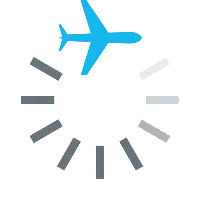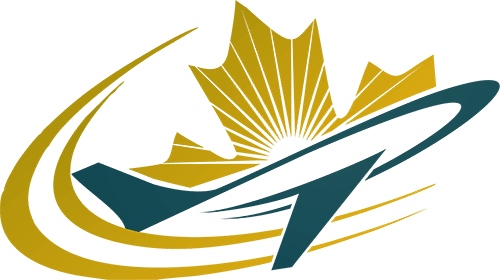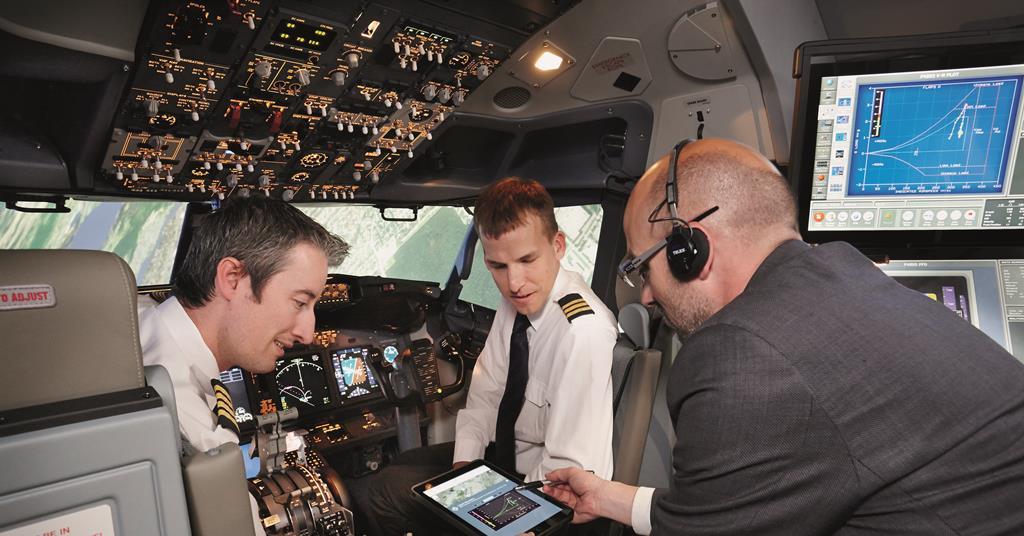This is a guest article from the Civil Aviation Training Magazine. We discuss this topic and many like this in our Commercial Pilot Ground School.
Several factors, both internal and external, affect the actual amount of time for an upgrade from First Officer to Captain. Capt. Paul Preidecker suggests the most important factor has nothing to do with how many years a pilot has logged as FO.
There is no magic formula for how long it will take to move from the First Officer’s right seat to the left seat as a Captain. Such a formula would indeed be magic because there are simply too many factors in play. During my time as chief instructor for a regional airline, I saw upgrade times vary from a few months to eight years.
My own experience – admittedly unusual – offers still another range (see “It’s for You!” below).
In my view, being a Captain involves much more than developing a mastery of the aircraft from the left seat. You must also master the operational situation. That naturally encompasses mastery of stick-and-rudder skills, which these days also includes knowing which button to push on the autopilot. But there’s more. As in so many aspects of aviation, though, it’s all about attitude.
Tipping Points
“What are you responsible for as Captain?” That was one of my first questions to candidates who appeared in my Captain upgrade ground school. Answers varied. Among the most common responses: safety, mentoring the First Officer, setting the tone for the flight, coordinating with dispatch and maintenance, conducting effective crew briefings, being the single point of contact for irregular operations, buying the drinks on an overnight, and “everything”.
“Everything” is probably the best answer, and I built on that idea by noting that I was about to raise the Captain’s responsibility bar even higher. In my view, each Captain carries responsibility for the outcome of the entire industry. If that sounds like an overstatement, just consider US Air 1549 and Colgan 3407. Two events, separated by a month, had vastly different outcomes due to the actions or inactions of the Captain. The media treatment of the 1549 Captain and crew celebrated the high level of professionalism in our industry. Then came Colgan 3407. The same media that created “heroes and miracles” from the Hudson River event now called the professionalism of the entire industry – and especially the regional airline sector – into question. If you doubt that, just recall that during the NTSB’s public hearings on 3407, the chairman said that many of the issues under review, to include commuting, fatigue, pay, sterile cockpit, unstabilized approaches, and training, pertain to the entire industry. Colgan 3407 became a tipping point.
I also stressed to the upgrade candidates that our individual and collective responsibilities for this industry are not limited to high-profile events. Every time we assume command of the aircraft, we have the opportunity to shape the industry. Occasionally we shape it in a grand way, but most often we do it in the everyday way of doing all the things we do in the right way. That includes following SOPs, making good briefings, and modeling positive customer service (e.g., keep passengers informed when there are delays). We each have the chance to create positive “micro-tipping points”.
Managing Demand for Supply
Our industry seems to operate in two modes: max thrust or full reverse. As we navigate through the many impacts of the pandemic, we see increased hiring at most airlines. Regional carriers are back to offering sign-on bonuses to attract new hires. Some are using retention bonuses to keep existing crewmembers. Most have increased possible entry points into the regional pool. For instance, pilots moving from Part 91 or Part 135 operations might use an airline application service or simply submit a direct application on the company’s website. Entering through one of the restricted-ATP alternatives is a common path for military pilots and flight instructors.
Many of the mainline carriers now offer career path programs as well. Among them are American’s Cadet, Delta’s Propel, and United’s Aviate programs. At the regional level is Republic Airways’ Lift Academy. There are obvious reasons for these carriers to offer an aviation career path. It is essential to attract and provide a steady stream of qualified individuals to support anticipated hiring needs, both now and in the future. In addition, these programs offer a means to introduce aviation industry lifestyle and the specific airline’s culture early in the training process. These programs vary in partners, requirements, and training affiliates, but they all provide a mechanism to support the industry. Financial need, long recognized as a barrier to entry, is also being addressed. This element brings yet another benefit: increasing outreach to, and participation by, underrepresented groups.
Mainline carriers are also hiring. Their pool of candidates often comes from the regional carriers. A regional FO might go directly to a major airline as an FO without gaining Captain experience at that regional. Captains at a regional airline, especially those with instructor and check airmen experience, often find a straightforward path to the mainline of their choice. A career path to a mainline carrier might take the form of a flow-through agreement, or some other form of preferential consideration. Just as some of the mainline operators have their own ab initio programs as described earlier, a key element of those programs is a path for regional pilots to move to the mainline partner and, eventually, to the left seat.
You’re not a Captain – Yet
My philosophy is that the mental muscle and “right attitude” training for the left seat should begin on Day One. In my time as chief instructor, I told each new hire class that they were First Officers due to the seniority system, but that we fully intended for them to upgrade to Captain. With that in mind, I advised them to view themselves as “right-seat Captains.” I hasten to add that I tempered that advice by ensuring that everyone understood flight deck roles and responsibilities. My regional airline colleagues tell me their message to new hires was fundamentally the same, but the extent to which a company embraces and acts on the concept varies with an airline’s culture, training, and operational protocols.
At my airline, it was always a disappointment to everyone when upgrade training did not go well – especially when it involved an FO with several years of right-seat experience. In most cases, the problem had nothing to do with flying skills. When an upgrade candidate was having trouble, it was almost always because of the “everything else” responsibility for things like decision making, situational awareness, and overall command ability. Some of these deficiencies arose from having Captains who failed to embrace and actively practice the role of mentor and teacher.
There are Rules for That
In this connection, you might recall that a torrent of Congressionally mandated rulemaking followed the Colgan accident. Using information from the Colgan event, and a 2004 accident involving Pinnacle Airlines, the NTSB and Congress identified problems with pilot professionalism. Some – including a senior FAA official at the time – suggested that there was no practical way to regulate or mandate professionalism and argued that it was up to all stakeholders to promote, develop, and maintain a high level of professional standards. Nevertheless, the NTSB made recommendations that would eventually become the Pilot Professional Development rule. The path to this rulemaking started with enactment of Public Law 111-216, creation of three FAA Aviation Rulemaking Committees (ARCs), and intensive labor, industry, and FAA collaboration that resulted in an NPRM issued on 7 October 2016. A national policy, N8900.545, took effect on 24 April 2020.
In a nutshell, the Pilot Professional Development rule stipulates that newly hired pilots will be required to observe flight operations and become familiar with company-specific procedures before operating an aircraft as a flight crew member. Further, Captains are to receive leadership and command training, as well as mentoring training, to enable them to effectively mentor First Officers. FAA AC 121-43 documents the guidelines for developing and implementing mentoring training for PICs.
The airline industry is already incorporating the elements of the Pilot Professional Development rule in both new hire and Captain training throughout their systems. Although Captain training must involve time learning certain administrative duties (e.g., maintenance logbooks, dealing with dispatch, and getting along with systems operational control) much of it is also directed to the development of Captains as leaders. Training now includes conflict resolution, communication strategies, and professionalism taught through role-playing and evaluation of real-life operational reports. Some of these operational scenarios come from IOE, which is all about teaching a pilot to perform effectively in real-world operations. They also help upgrade candidates master the overall operational situation, both in concept and in practice.
The path to the left seat is not always predicable. But the path to being Captain of your career can – and should – start with your very first flight.
“It’s for You!” – My Upgrade Experience
I went to the simulator about eight weeks after my start date. Two minutes before lesson number one, the phone in the simulator rang. The instructor answered, listened with a puzzled look, and said, “It’s for you.” I found myself on the line with the fleet manager, who was calling to say that I been awarded the new base. Great! Then he said that I had also been awarded a Captain’s position, which meant that I should move to the left seat and get going. Ummmm, great?
You can imagine the range of feelings that washed over me. The idea of going straight to the left seat had an obvious appeal, but it was also daunting. I was new to Part 121, glass, and turboprop aircraft. But I strapped in and committed myself to making it work. Once I completed a few left-seat sessions, I found that the flying was relatively easy – it was the “everything else” that was challenging. There was a lot of “everything else.” After getting my type rating, I was grateful that the company offered as much IOE as I wanted, and as much as they thought I needed. We were both seeking a high level of comfort in the operation, and that’s what we got.
Although my upgrade scenario is not the common trajectory, it does illustrate the dynamic nature of our industry. Predicting the future is difficult but preparing for the future is not. Just adopt a Captain’s mindset from Day One, and soak in as much of the “everything else” as you can before it all becomes your responsibility.


